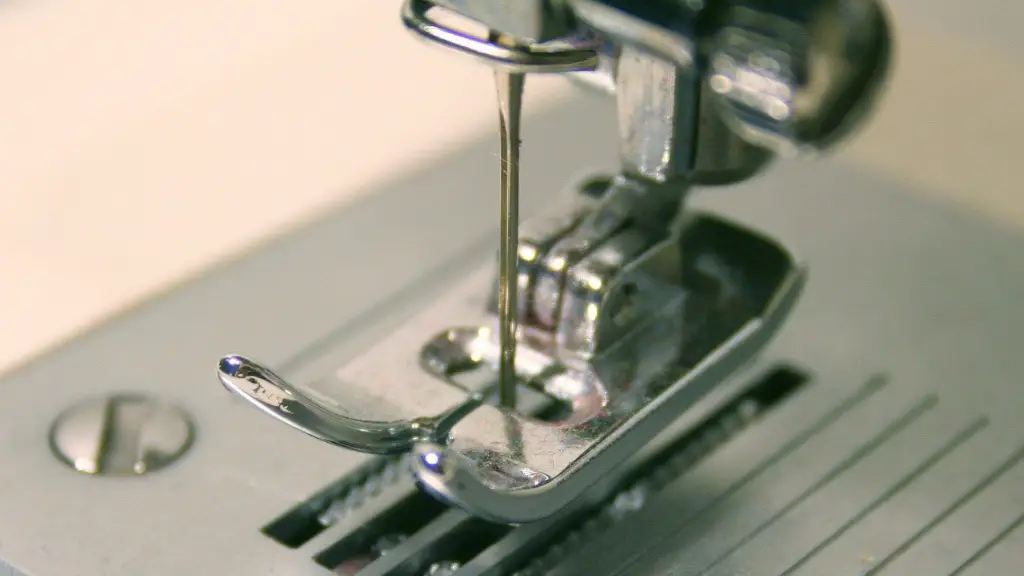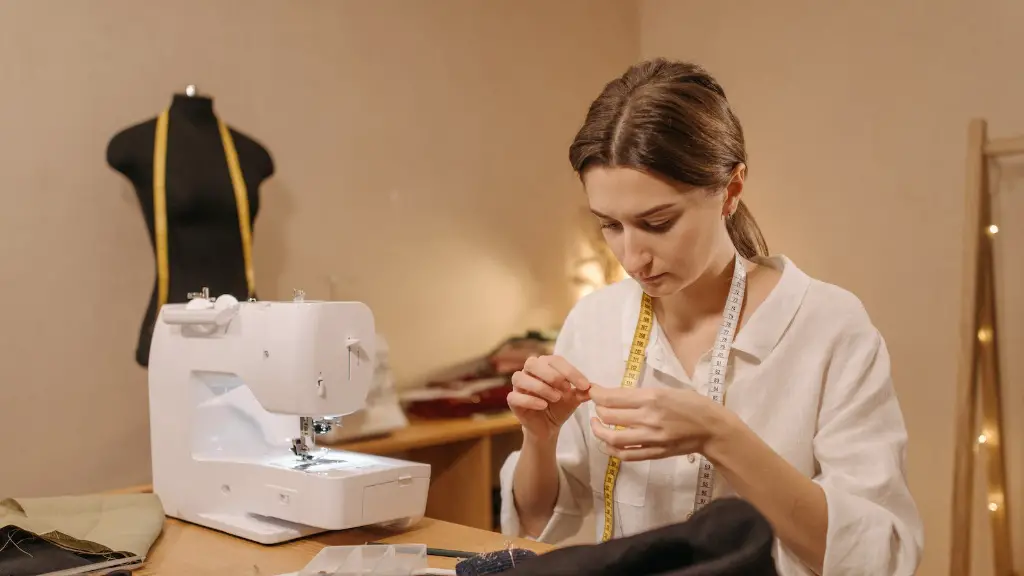In many cases, sewing machines can come in handy when it comes to altering a skirt. However, it is possible to successfully alter a skirt without one. Whether you’re attempting to make a skirt shorter, let it out, or give it more fit and flare, here are some steps to follow on how to alter a skirt without a sewing machine.
Gather Materials
Begin by gathering the materials you need. You should have fabric scissors, measuring tape, pins, chalk, an iron and ironing board, and an extra piece of fabric. Depending on the alteration, you may need a zipper foot, buttons and buttonholes, or any other necessary presser feet. You will also need some basic hand sewing needles and thread in colors that match your skirt.
Shifting the Waistband
One of the most common skirt alterations is to shift the waistband. To do this, start by measuring the waistband and the waist of the skirt to determine how much of the waistband needs to be shifted. Mark the new waist measurement on the skirt with chalk and remove the waistband. Measure the old waistband measurement onto the extra piece of fabric, then cut it from the fabric. Now you will have an additional waistband to work with. Sew this piece onto the skirt, making sure that the seam is pressing outwards from the centre of the skirt. Iron the seam and then press the waistband back onto the skirt.
Letting Out the Hip
To let out the hip, begin by pinning at the side seams where the hip area is located. Use a dressmakers knee and pull out the excess fabric at the edges. Pin the seams in place effectively so the fabric won’t shift while you sew. Now, using a hidden stitch, sew the extra fabric onto the skirt. Finally, iron the fabric flat to the skirt and turn the skirt right side out.
Creating Gathers
Another alteration often needed is creating gathers. To do this, start by measuring the waist of the skirt and the circumference of the gathers. Pin the gathers in place at the bottom edge of the waistband and then sew with a hidden stitch. Iron the gathers flat, and then measure the gathers to make sure they are evenly distributed.
Adding a Hem
Adding a hem to a skirt is often a necessary alteration. To do this, start by determining the length of the hem, then mark the desired length with chalk. Fold the skirt wrong side out and pin the fabric in place. Sew the hem using a hidden stitch and as with any alteration, make sure to use the colour of the thread to match your skirt. Now, iron the skirt and turn it right side out, and your skirt should be newly altered.
Adding a Flare
To add a flare, start by pinning the extra fabric at the sides or edges of the skirt. Use a knee lifter to pull and evenly distribute the fabric at the side seams. Sew the fabric on to the skirt in a straight line along the side seams. Iron the fabric flat and make sure the stitches are hidden.Now, you should have the desired flare added to your skirt.
Making a Skirt Shorter
Making a skirt shorter often involves using the hem. Measure the desired length, mark it with chalk, and fold the skirt wrong side out. Pin the fabric in place along the desired new length and carefully sew the hem using a hidden stitch. Iron flat and then turn it right side out and admire the newly altered skirt.
Adding Fabric to a Skirt
If you’re adding fabric to a skirt, start by gathering the necessary fabrics and trims. Measure the amount of fabric that needs to be added, cut it according to the measurements, and mark it with chalk. Pin the fabric, trim and fabric lining to the skirt and then sew with a hidden stitch. Iron the new fabric flat and turn the skirt right side out.
Adding Darts and Pleats
Adding darts and pleats are simple alterations that allow the skirt to fit better. Start by measuring the size of the skirt and then follow the pattern instructions when cutting the fabric for the darts and pleats. Mark the darts and pleats with chalk then pin in place before sewing. Iron the fabric flat, turn it right side out, and you should have a newly altered skirt.
Replacing Sewing Machine Parts
When altering a skirt without a sewing machine, you may need to replace any missing sewing machine parts. Begin by identifying the parts that need to be replaced and then order them online. Once the parts have arrived, install them in the appropriate space and make sure the machine is properly functioning. Then, use your hand sewing needles to finish the alteration of your skirt.
Frayed Hem Repair
If the hem of your skirt is frayed, it may need to be repaired. Start by trimming the excess fabric with scissors and then use fabric glue to secure the edges of the fabric. This will help avoid the frayed edges from further unraveling. Once the glue has dried, use a hidden stitch to secure the hem in place.
Replacing Zipper
If you need to replace a zipper on a skirt, start by taking measurements and determining the size of the new zipper. Remove the old zipper and then insert the new one according to the measurements. Sew the top and bottom edges of the zipper, making sure it is securely attached to the fabric. Finally, you should have a brand new zipper.
Tailoring Hems
Tailoring a hem is a simple yet important step in the alteration process. Begin by taking measurements of the waistband and the length of the hem. Mark the length of the hem with chalk and cut the fabric according to the measurements. Sew a hem and then iron the fabric until it is flat to the skirt. Turn the skirt right side out and you should now have a tailored hem.



